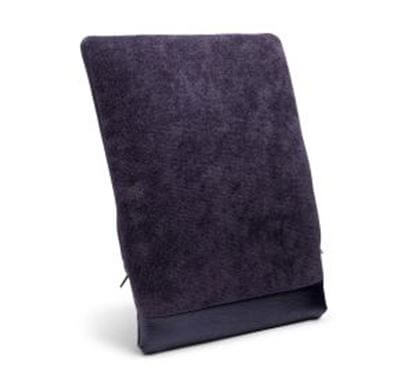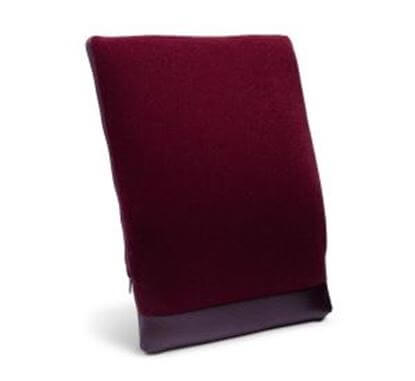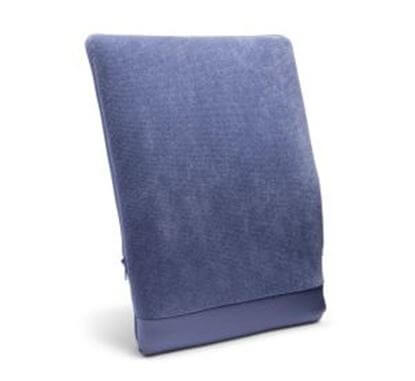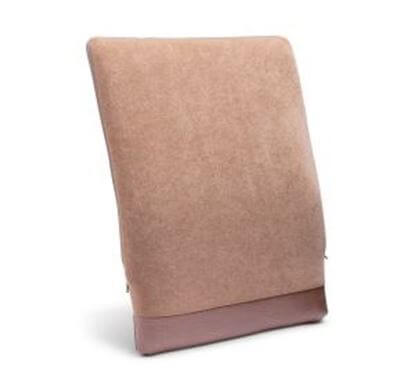Low back pain and driving, and non-traumatic spinal cord compression and interference at the wheel
Low back pain is a frequent process caused by injuries to the lumbar spine and spinal nerve roots.
Its incidence is estimated between 65-80%, and is the most frequent cause of incapacity for work in people under 45 years of age.
Acute low back pain
Related to multiple causes such as:
- Intense efforts, which cause localized pain with spinal muscular contracture not irradiated.
- Vertebral fractures, falls on the legs or forced flexion, being more vulnerable patients with osteoporosis, Cushing's disease, osteopathies, hyperparathyroidism, bone metastasis, multiple myeloma and Paget's disease.
- Protrusion of the lumbar intervertebral discs, especially L5-S1 and L4-L5, which causes back pain, abnormal postures and limitation of movement. The involvement of the nerve roots produces pain that is usually unilateral and is accompanied by disorders of sensitivity.
- Syndrome of the articular intervertebral veneers, by compression of the nerve roots without discopathy.
- Diseases of the hip, which can produce radiated pain to the buttocks and knees.
Chronic back pain
Frequently associated to:
- Lumbar spondyloarthrosis, by degenerative process of the lumbar vertebrae that produces exostosis, narrowing of the medullary canal and compression of the nerve roots.
- Ankylosing spondylitis, with lumbalgia irradiated to the thighs, limitation of movements and rigidity, which evolves to decrease thoracic mobility and dorsiflexion flexion.
- Psoriatic arthritis, Reiter's syndrome and inflammatory bowel disease produce a similar pattern of limitation of movements.
- Spondylolisthesis produces recurrent low back pain that can often radiate to the lower extremities.
- Inadequate postures can cause back pain due to overload of muscles and ligaments, although they may be secondary to disc alteration. Lumbar hyperlordosis that occurs due to standing for a long time, the forced inclinations of the back and neck in poorly placed computers and without footrests or sitting badly can cause low back pain.
- Static alterations of the lower extremities by flat feet or cavities, which force the spine to compensate for posture, produce lower back pain.
- Scoliosis and unbalanced lower limb asymmetries establish pain.
Medical treatment is causal and symptomatic with analgesics, muscle relaxants and anti-inflammatories.
Tips
- Rehabilitation and recommendations to prevent exacerbations include advice on driving.
- While the patient is experiencing symptoms, such as pain, loss of strength and sensory disturbances, he can not drive.
- Rest, physiotherapy with massages and recommendations to prevent exacerbations including advice on driving are advised.
- A driver who sits inadequately behind the wheel may favor the onset of back pain, or worsen the existing one.
- The patient, therefore, should avoid low, soft chairs and cushions below the knees.
- The vehicle must have a high, comfortable seat, with straight backrest and a good support of the rescuer.
- The pain and the neurological or movement limitations will cause the doctor to discourage driving.
- If the patient is going through a period of anxiety or stress, all the symptoms are accentuated and the control of the vehicle decreases.
- The drugs used in the symptomatic treatment of these clinical pictures frequently have a sedative effect, as is the case with benzodiazepines and major tranquilizers.
- The doctor must warn the patient that, even if he has improved the symptoms and can already drive, the maintenance treatment can produce important and dangerous side effects, which can delay the start of driving until the doses decrease or the treatment is withdrawn .
Non-traumatic compressions of the spinal cord
Its origin is multiple, extradural due to vertebral or intradural metastasis due to benign extramedullary tumors, neurinomas and meningiomas.
- The lesional syndrome is manifested by the involvement of one or more roots at the level of compression, with root pains that are usually alive, fixed, resistant to treatment and exacerbated by the Valsalva maneuvers. Hypoesthesia in band, amyotrophic paralysis and abolition or inversion of the tendon reflex can be associated, a determining sign in the compressions of the cervical cord.
- The sublesional syndrome produces motor disorders that initially alter the gait intermittently, with hesitation of one limb and fatigue of the leg after movement, unilateral at the beginning and then bilateral. Later the disorders become permanent and the march is rigid, spastic and finally impossible. Sensitive signs are pressure pain and multiple paresthesia distal to the level of the lesion, and are usually delayed with respect to motor signs. The thermal and pain sensibility is more altered than the position sensitivity. The sensory symptoms slowly aggravate until ending in a complete anesthesia of the sublesional area. Sphincteric disorders are relatively late and produce an imperious and frequent urge to urinate that will limit driving.
- The spinal syndrome is characterized by segmental stiffness of the spine, mainly cervical and lumbar, painful deformation and pain at the pressure of the spinous processes.
Tips
- Loss of strength, pain, and motor and sensory disturbances impede movements for the proper control of vehicle controls, so you can not drive.
- The pain and the neurological or movement limitations will cause the doctor to discourage driving.
- While the patient is experiencing symptoms, such as pain, loss of strength and sensory disturbances, with interference in safety at the wheel, he can not drive.
- Surgical decompression of the spinal cord requires a more or less prolonged period of functional recovery and safety, in which it is not possible to drive until the specialist reports favorably on it.
- The specialist will indicate in each case, depending on the treatment required for each disease, the capacity of the patient to be able to drive, and will inform about it in each revision.
- If there are sequelae, they should be assessed for possible interference with the driving and will be informed of them, as well as the possibility of recovery over time.
- After the surgery, the period of convalescence is left to medical criteria to be able to drive without limitations.
- The permanent disabilities can be evaluated with the report of the specialist doctor, to try to adapt the vehicle to the driver and allow the driving with the restrictions that the law establishes for each case.
Featured products

$129.95
$159.99
SPINA-BAC® Ergonomic Back Cushion is your ultimate support that adjusts to your own back. ...
Add to cart
$129.95
$159.99
SPINA-BAC® can transform any cheap office chair into an ergonomic cloud with the perfect l...
Add to cart
$129.95
$159.99
With SPINA-BAC® you can create your own Ergonomic Home & Office Chairs. Use SPINA-BAC® for...
Add to cart
$129.95
$159.99
Place it on your office chair at work, or use it on the couch at home. If you are sitting ...
Add to cart